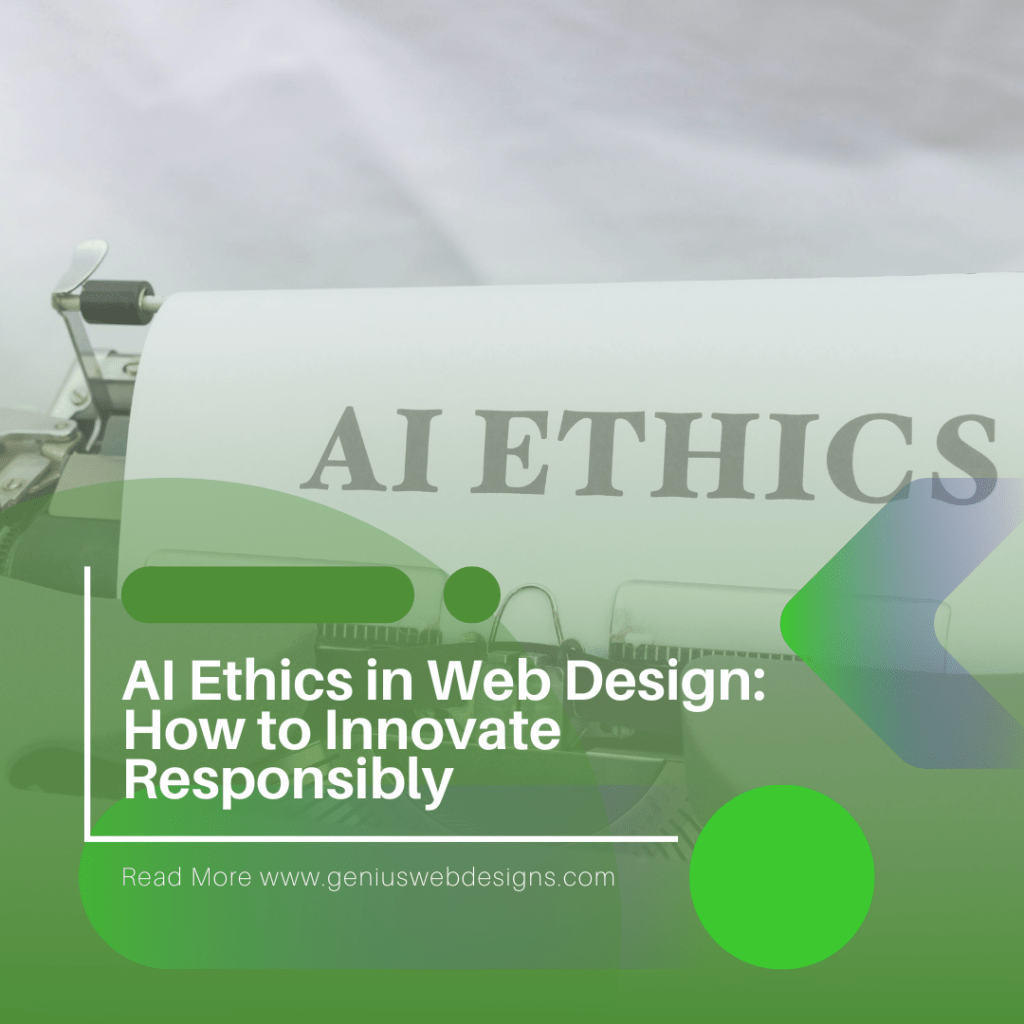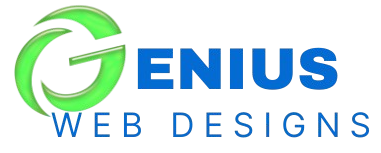
Artificial Intelligence (AI) is revolutionizing the way we design and interact with websites. From personalized user experiences to automated design tools, AI is making web design faster, smarter, and more efficient. However, as AI becomes more integrated into web design, ethical concerns are emerging. How do we ensure that AI-driven web design respects user privacy, avoids bias, and promotes inclusivity? In this article, we’ll explore the ethical implications of AI in web design and provide actionable insights for designers and developers to create responsible and user-centric websites.
Why AI Ethics Matter in Web Design
AI is no longer just a buzzword it’s a powerful tool that shapes how websites are built and how users interact with them. From chatbots to recommendation engines, AI-driven features are becoming standard in modern web design. However, with great power comes great responsibility. Ethical considerations are critical because:
- AI impacts user trust: Unethical AI practices can lead to privacy violations, biased outcomes, and a lack of transparency, eroding user trust.
- AI influences decision-making: AI algorithms can shape user behavior, from what they buy to what they read, raising concerns about manipulation.
- AI reflects societal biases: If not carefully designed, AI can perpetuate harmful stereotypes and exclude marginalized groups.
Key Ethical Challenges in AI-Driven Web Design
1. Privacy and Data Security
AI systems rely on vast amounts of user data to function effectively. Whether it’s tracking user behavior or personalizing content, AI often collects sensitive information. However, this raises significant privacy concerns:
- Data collection: Are users aware of what data is being collected, and do they consent to it?
- Data storage: How securely is user data stored, and who has access to it?
- Data usage: Is the data being used ethically, or is it being exploited for profit?
Best Practices:
- Implement clear privacy policies and obtain explicit user consent.
- Use encryption and secure protocols to protect user data.
- Minimize data collection to only what’s necessary for functionality.
2. Bias and Fairness
AI algorithms are only as good as the data they’re trained on. If the training data is biased, the AI will produce biased outcomes. In web design, this can manifest in several ways:
- Personalization bias: AI-driven recommendations may reinforce stereotypes or exclude certain groups.
- Accessibility issues: AI tools may not account for users with disabilities, leading to exclusion.
- Cultural insensitivity: AI-generated content may not resonate with diverse audiences.
Best Practices:
- Use diverse and representative datasets to train AI models.
- Regularly audit AI systems for bias and fairness.
- Ensure AI-driven designs are accessible to all users, including those with disabilities.
3. Transparency and Explainability
One of the biggest challenges with AI is its “black box” nature—users often don’t understand how AI makes decisions. This lack of transparency can lead to mistrust and confusion. For example:
- Why did a user receive a specific recommendation?
- How does a chatbot decide what response to give?
- What factors influence the content displayed on a website?
Best Practices:
- Provide clear explanations of how AI-driven features work.
- Allow users to opt out of AI-driven personalization if they choose.
- Use simple, user-friendly language to communicate AI processes.
4. User Manipulation
AI has the power to influence user behavior, often without their knowledge. For example:
- Dark patterns: AI can be used to design interfaces that trick users into making decisions they wouldn’t otherwise make.
- Addictive design: AI-driven notifications and recommendations can keep users hooked, potentially harming their mental health.
Best Practices:
- Avoid manipulative design practices that exploit user psychology.
- Prioritize user well-being over engagement metrics.
- Provide users with control over their experience, such as the ability to customize notifications.
5. Accountability and Responsibility
When something goes wrong with an AI-driven feature, who is responsible? Is it the designer, the developer, or the AI itself? This question becomes even more complex when AI operates autonomously.
Best Practices:
- Establish clear guidelines for accountability in AI-driven projects.
- Monitor AI systems regularly to identify and address issues.
- Be transparent with users about the limitations of AI.
How to Implement Ethical AI in Web Design
1. Adopt Ethical Design Principles
Start by integrating ethical principles into your design process. Consider frameworks like the Ethical Web Design Manifesto, which emphasizes inclusivity, transparency, and user empowerment.
2. Collaborate with Diverse Teams
Diverse teams bring different perspectives, helping to identify and address potential biases in AI systems. Include designers, developers, ethicists, and end-users in the design process.
3. Test and Iterate
Regularly test AI-driven features with real users to identify ethical concerns. Use feedback to iterate and improve your designs.
4. Stay Informed
AI ethics is a rapidly evolving field. Stay up-to-date with the latest research, guidelines, and best practices to ensure your designs remain ethical.
Examples of Ethical AI in Web Design
- Inclusive Chatbots: AI-powered chatbots that support multiple languages and are accessible to users with disabilities.
- Transparent Recommendations: E-commerce websites that explain why certain products are recommended.
- Privacy-First Personalization: Websites that allow users to control how their data is used for personalization.
The Future of AI Ethics in Web Design
As AI continues to evolve, so too will the ethical challenges it presents. Web designers and developers must take a proactive approach to address these challenges, ensuring that AI is used responsibly and ethically. By prioritizing user trust, fairness, and transparency, we can create AI-driven websites that enhance the user experience without compromising ethical standards.
Conclusion
AI is transforming web design, but its power comes with ethical responsibilities. By addressing issues like privacy, bias, transparency, and accountability, designers can create AI-driven websites that are not only innovative but also ethical and user-centric. As the digital landscape continues to evolve, ethical AI practices will be key to building trust and ensuring a positive user experience.
By following the best practices outlined in this article, you can stay ahead of the curve and create websites that are both cutting-edge and ethically sound. Let’s embrace the potential of AI while ensuring it serves the greater good.
Internal Links
- The Importance of Accessibility in Web Design
- How to Build Trust with Transparent Design Practices
- Top AI Tools for Modern Web Designers
By addressing these ethical considerations, you can ensure your AI-driven web designs are not only innovative but also responsible and inclusive.
New chat


